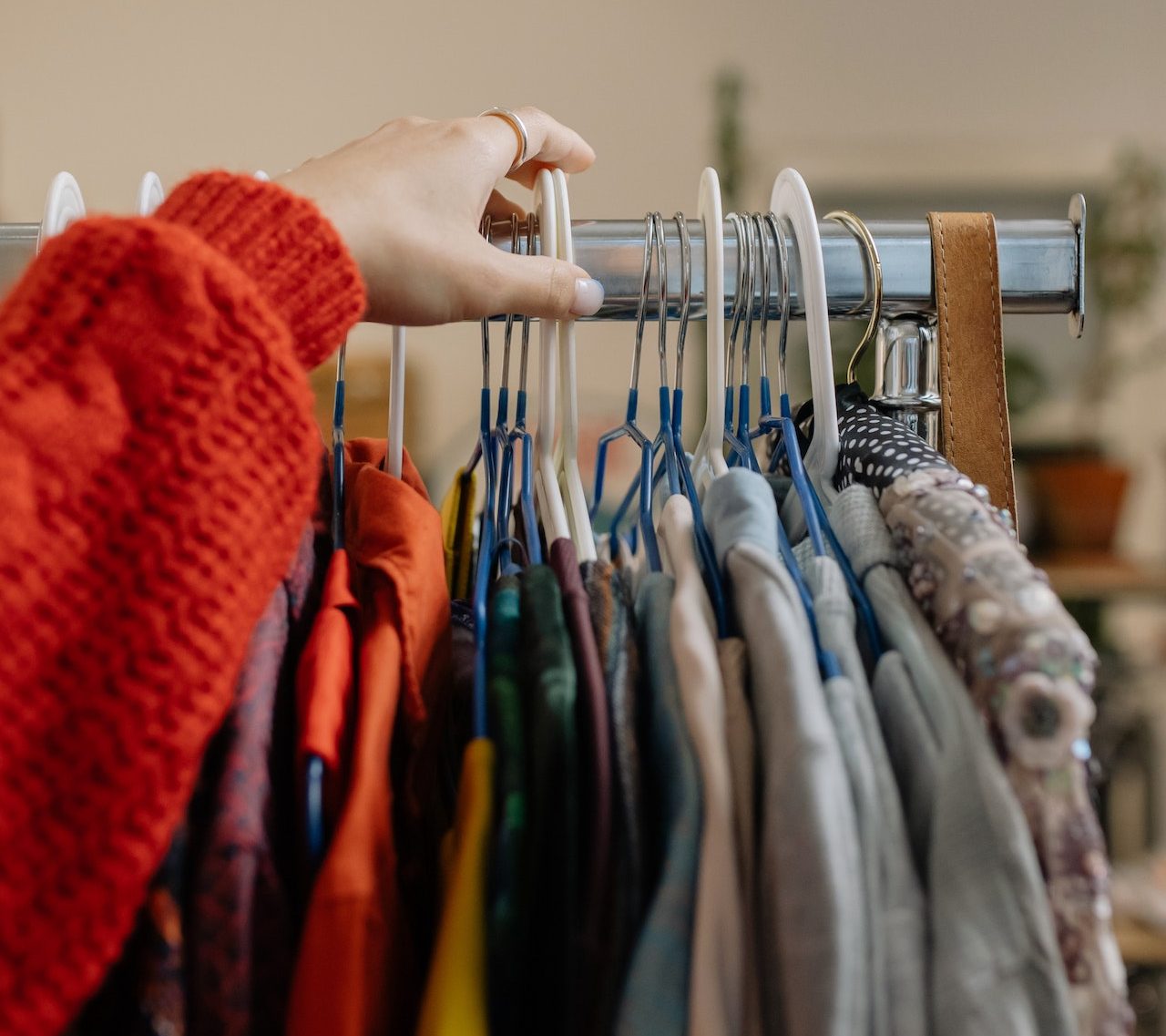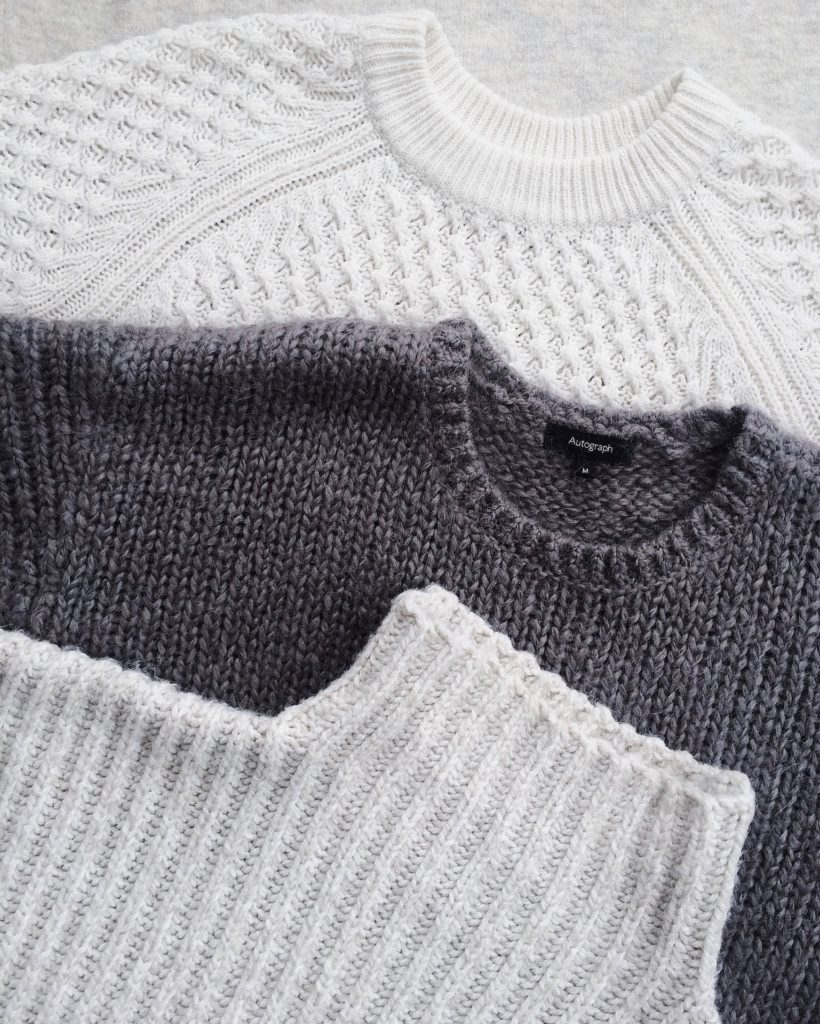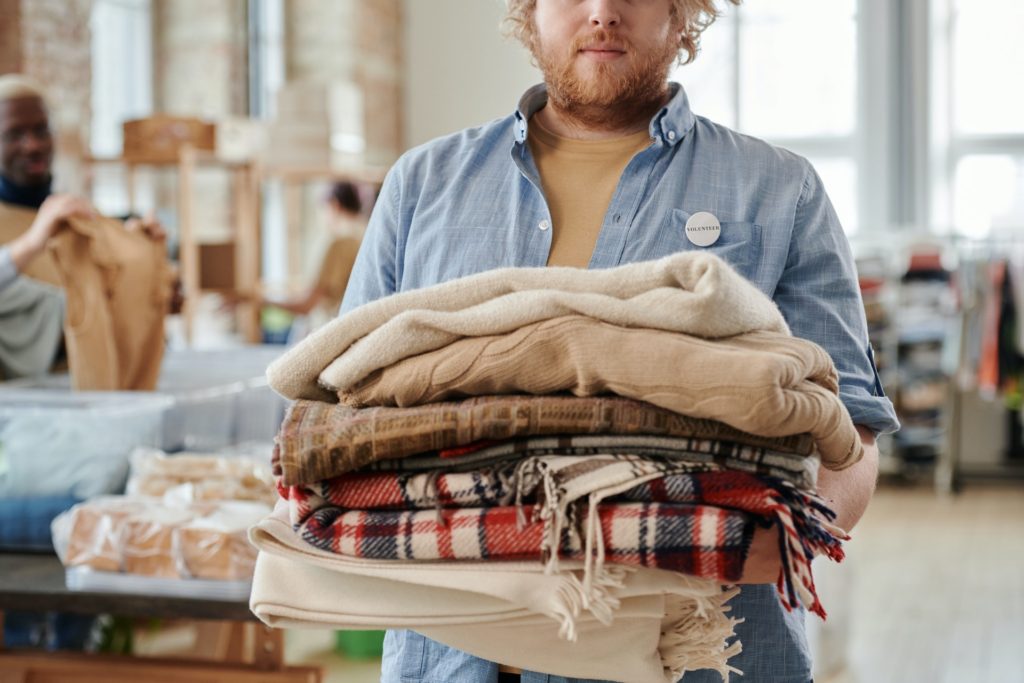
Thrift shopping, or secondhand shopping, isn’t just for the frugal anymore. Over the past few years, thrifting has been adopted by sustainable shoppers and zero wasters as a popular way to reduce and reuse rather than consume. But with every new trend comes controversy. Many people claim the rise in thrifting popularity isn’t a good thing. So, is thrifting actually good for the environment? And, could it be bad?
Table of Contents
What is thrifting?
In case you’re new to the trend or the sustainable community, let’s cover what thrifting is first. Thrifting means to go shopping at a thrift store or somewhere that sells used goods at a low cost.
You might also see secondhand shopping or consignment shopping, both of these terms also refer to shopping for used items at a price lower than their original retail price. Some popular thrift stores are Goodwill and the Salvation Army.
Second-hand shopping generally refers to shopping for items that are used. Second-hand shopping isn’t just restricted to used items in a thrift store. You could shop second-hand by checking out garage sales or places like eBay and Facebook Marketplace.
And finally, consignment stores. Consignment stores will generally have higher prices than thrift shops, but you’re also more likely to find high quality items. That’s because the original owner of the piece is either selling it through the store or selling it to the consignment store, rather than dropping it off as a donation to be forgotten about.
Thrifting for the Environment
Thrifting’s popularity has been on the rise since 2016. thredUP claims the resale market is expected to grow 16 times faster than the broader retail sector by 2026. And that’s just in the U.S., every continent is seeing faster growth in resale than in retail.
Shoppers concerned with waste and sustainability have taken up thrifting as a way to lower the amount of brand-new goods they consume. People like you and I want to consume less, or buy less, for many different reasons but the main reason is the harmful footprint retail clothing has on the planet.
For example, a cotton t-shirt has a massive environmental impact. It takes a whopping 713 gallons of water to grow the cotton for your standard t-shirt. That same cotton needs fertilizer, pesticides, machinery to harvest the cotton, fuel to power the machinery, and packaging to ship the cotton. The list doesn’t end there but I think you get the picture.
Buying a used cotton t-shirt replaces your need for a new one. That means the secondhand t-shirt that’s brand new to you effectively has no environmental impact compared to buying a new one. That’s why thrifting is generally seen as eco-friendly.

Fast Fashion
What’s wrong with fast fashion?
So, thrifting can be good for the environment because it reduces the overall demand for new products and raw materials in the economy. Let’s talk about thrifting’s “evil opposite,” fast fashion.
Fast fashion is a term used to describe a segment of the clothing industry that creates clothes quickly and cheaply in an effort to keep up with short-lived trends.
As the saying goes, you get what you pay for. Roam the aisles of any thrift store and it’s almost certain you’ll find sweaters from decades ago. I promise you those sweaters didn’t cost the equivalent of $20 when they were first bought.
Today, you can go to a store at any mall or shopping center and buy a relatively cheap article of clothing. The catch is, that piece of clothing isn’t a quality piece of clothing.
The low quality of fast fashion pieces is what makes fast fashion so unsustainable. Rather than buying a shirt that lasts 10+ years, fast fashion makes shirts that last 2 or 3. That means you would need to buy 3 to 5 shirts over 10 years rather than buying just 1 good quality shirt.
Over time, the environmental impact of those low-quality garments is incredibly high compared to long-lasting clothes.
It’s also notable that a ton of fast fashion clothes don’t sell. They don’t sell for any number of reasons but more importantly, large retailers send their clothes away, damage them, and/or throw them away even when they’re in perfect condition.
These practices only add to the wastefulness of the clothing retail industry. If you’d like to see what that wastefulness looks like, check out this Insider article. It shows literal mountains of brand new clothes shipped to foreign countries and just dropped off outside to rot.

Why is thrifting better than fast fashion?
Remember the environmental impact of thrift items? It’s basically zero.
I say basically because a thrift store still needs electricity, generates waste, and does other things that have an environmental footprint. But, those don’t add up to much of an impact per garment when we’re comparing them to fast fashion pieces.
Unlike fast fashion pieces, thrifted clothing wasn’t shipped from overseas, packaged in plastic and new cardboard, and driven hundreds of miles. That’s why the environmental impact of thrifting is much lower than fast fashion.
If you pick quality and ethical thrift stores, then you can also support charitable causes too. More on that later.
Why is thrifting sometimes considered bad?
Despite how good thrifting sounds right now, there are some common concerns about the rising trend.
More Demand and Less Supply
One major concern about thrifting is that increased demand makes it hard for people dependent on thrifting to find the affordable pieces they need within their budget.
For example, thrift flipping is a harmful practice where someone takes thrift store items and resells them at a higher price for profit. They may fix the thrifted item before selling it. Rather than that high-quality item going to someone who needed it or wanted it, it was instead exploited for profit.
When people that can afford new and nicer items remove quality items from thrift stores, it leaves little for the people that depend on thrift stores for affordable clothing and furniture.
Bad Practice
Another concern with thrifting has to do with the ethics of large thrift stores. Stores like Goodwill and Salvation Army take items for free and sell them to turn a profit.
Salvation Army has made headlines for years as an anti-LGBTQ+ brand. Goodwill has been known to exploit people with disabilities by legally paying them less than minimum wage.
Ultimately, it’s up to you to avoid bad practices when thrifting and to vote with your dollars as you see fit. Some people might only have access to a Goodwill, and you shouldn’t feel guilty about shopping there. I still shop at Goodwill myself, but I check other stores first.
If you want to thrift while trying to avoid the ethical concerns of secondhand shopping, there are a few other things you can do too. Let’s talk about them.

Common Questions About Thrifting
Where to Start Thrift Shopping
If you’re brand new to thrift shopping, start with whatever store is closest to you. To be honest, thrifting can feel really inconvenient at times.
In my experience, most of the inconvenience is because I don’t actually know if I’ll find what I’m looking for. Unlike walking into a large retail store, you can’t be sure you’ll find a fuzzy red sweater on the rack.
So by going to the stores closest to you, you’re less likely to feel inconvenienced if you don’t find what you’re looking for.
After a while, you’ll become familiar with which stores have what. Some stores always have nice clothing and get refreshed every Thursday. Others have the best furniture or kitchenware. You’ll get an idea for your thrift stores the more you go.
Where To Go Thrifting
If you’re concerned about the ethics of some thrift stores, then you can always do research on big names and see if their values align with yours. As a gay man, I avoid the Salvation Army. You might feel differently.
It’s also super common for local thrift stores to operate for specific causes. For example, I used to go to a thrift store that funded the local Boys and Girls Club with their profits. I’m sure you’ll find local thrift stores that support similar causes too.
If you have more room in your budget, consignment stores can be a great place to look. They’re similar to thrift stores because they sell used items but they operate a bit differently. Consignment stores will generally have higher prices than thrift shops, but it’s also more likely to find high-quality pieces.
Consignment stores sell an item for the original owner and they take a cut of the sale. This means both the store and the owner have a stake in the item, so they’re more likely to offer high-quality items.

How To Go Thrifting
This might seem like a no-brainer, but if you’ve never been to a thrift shop then it might feel a little daunting.
The first thing you need to do is figure out what you are looking for. If you’re trying to be sustainable, then you shouldn’t really be shopping without a purpose.
Only buy items that you are specifically looking for or need. Even though thrifting is more sustainable than buying new, it can still be wasteful if you buy things you don’t need and won’t use.
Once you know what you need, then figure out what stores you want to go to. Google will help you find your options. You can look for thrift stores, thrift shops, secondhand stores, and consignment stores. Antique stores also specialize in old and used items.
And if you’re just looking for used items in general, then I can’t recommend Facebook marketplace and garage sale groups enough! Facebook marketplace is basically like a 24/7 garage sale. It’s also a great place to sell items or offer free items instead of throwing them away.
When you’ve figured out what shops you’re going to visit, all you need to do is bring yourself and your wallet. Unless you’re doing some serious thrifting, you probably won’t even need a bag. I just decline a bag and carry my 1 or 2 shirts in my hands.
I recommend bringing cash until you know your stores well. Some stores don’t allow credit or debit below a certain dollar amount because of high credit card fees. Usually, the limit is low, around $5, but if you just need one or two things then you may not meet that limit.
Thanks for joining me today! If you’re interested in other ways you lower your environmental footprint then make sure to subscribe to my newsletter!
You might also like my post, 25 Easy Things You Can Do Today To Be More Sustainable!
Sustainably is supported by readers like you. When you buy through links on this site, we may earn an affiliate commission at no additional cost to you. You can read more about affiliate links on our “Affiliate Marketing…” page.